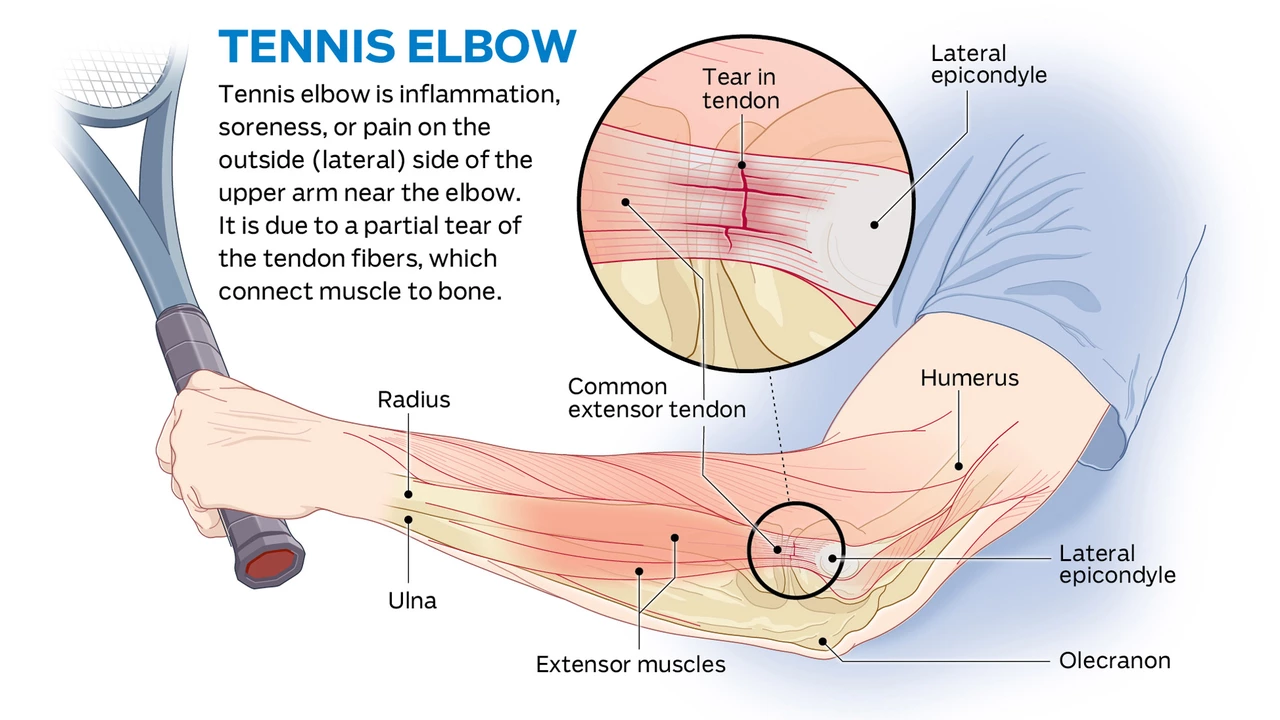Understanding Tennis Elbow
Before we delve into the crucial connection between playing the piano and the development of tennis elbow, it's vital to understand what tennis elbow is. In medical terms, it's referred to as lateral epicondylitis. This condition occurs when the outer part of the elbow becomes painful and tender to touch, usually as a result of overuse or strain on the forearm muscles and tendons.
While it's commonly associated with tennis players, hence the name, it can occur in anyone who repeatedly uses their arm or hand in a rigorous manner. In essence, if there is a strain on the muscles and tendons that extend to the outside of the elbow, you might be at risk of developing tennis elbow.
Playing the Piano and Tennis Elbow
As a pianist, you might be wondering how these two could possibly be connected. The reality is that the repetitive and strenuous movement of the fingers, hand, and forearm when playing the piano can lead to tennis elbow.
When playing the piano, you use specific muscles over and over again. This overuse can result in inflammation and pain in the elbow if not properly managed. The pain may start from your elbow but can extend to your forearm and wrist, affecting your ability to perform simple tasks.
Identifying Symptoms of Tennis Elbow
It's important to know the signs of tennis elbow if you're a pianist. This can help you take the necessary precautions and seek medical attention before the condition worsens. The main symptom is a pain or burning sensation on the outer part of the elbow. In some cases, the pain may extend to the forearm and wrist.
You might also experience difficulty in extending or straightening your arm. If you notice these symptoms and you're a regular piano player, it's advisable to seek medical attention.
Preventing Tennis Elbow as a Pianist
Prevention is always better than cure. As a pianist, there are several things that you can do to prevent tennis elbow. Proper technique is crucial. You should not overstretch your fingers or apply too much force when hitting the keys.
Regular breaks are also essential to rest your muscles and prevent overuse. You might also want to consider exercises that strengthen the forearm muscles. If you're unsure of the right technique or exercises, you might want to take lessons from a professional piano teacher.
Treatment Options for Tennis Elbow
If you've already developed tennis elbow from playing the piano, don't panic. There are several treatment options available. The first line of treatment is usually rest, ice, compression, and elevation (RICE). Over-the-counter pain relievers might also help.
In more severe cases, physical therapy or even surgery might be necessary. However, this is usually the last resort if other treatments don't work. You should always consult a healthcare professional if you suspect you have tennis elbow.
Conclusion: Can You Really Get a Tennis Elbow from Playing the Piano?
In conclusion, yes, you can get tennis elbow from playing the piano. The repetitive and strenuous movement involved in playing the piano can lead to overuse of the forearm muscles and tendons, resulting in inflammation and pain in the elbow.
However, this doesn't mean that you should stop playing the piano. Instead, you should focus on proper technique, regular breaks, and exercises to strengthen your forearm muscles. And if you notice any symptoms of tennis elbow, you should seek medical attention immediately.

